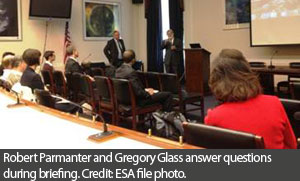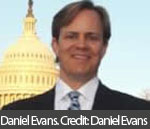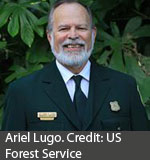 |
CONGRESSIONAL VISITS DAY
CONGRESSIONAL BRIEFINGUnderstanding zoonotic disease outbreaks
Presentations were given by Robert Parmenter, Director of the USDA Valles Caldera National Reserve Scientific Services Division and Gregory Glass, Professor at Johns Hopkins School of Public Health and Director of the Alabama Southern Research Institute’s Global Biological Threat Reduction Program. Parmenter gave an overview of plague, Lyme disease, hantavirus and the animals that are vectors and hosts of zoonotic diseases. Glass talked about the technologies and federal agencies that are key providers of data needed to track and predict zoonotic disease outbreaks. In addition to a mixture of scientific societies and federal agencies, congressional staff from the Senate Health Education Labor and Pensions Committee as well as from the states of Colorado, Minnesota, New Mexico and Vermont were present. The briefing was hosted by the House Science, Space and Technology Committee. For additional information on the briefing, click here. LETTERSMaintaining scientific peer review ESA joined with other members of the Coalition for National Science Funding in sending a letter to House and Senate science committees requesting that the National Science Foundation’s existing peer review process be maintained. Environmental educationIn April, ESA joined education and environmental groups in sending a letter to House and Senate appropriators urging support for funding environmental education and literacy programs within the Environmental Protection Agency and the National Oceanic and Atmospheric Administration. Scientific conferencesESA also joined other scientific societies in sending a letter to the Office of Management and Budget (OMB) in response to a recent memorandum that could restrict federal employee participation in scientific conferences. The letter requests that OMB clarify the intention of the memorandum and prevent it from being applied in a way that limits the exchange of scientific research across academia, government and industry. Invasive constrictorsIn March, ESA joined other members of the National Coalition on Invasive Species in signing a letter requesting that five invasive constrictors be listed as injurious under the Lacey Act. The move would effectively prohibit the importation and interstate movement of the reticulated python, the DeSchauensee’s anaconda, the green anaconda, the Beni anaconda and the boa constrictor. ESA MEMBERS IN ACTION
Ann Bartuska (US Department of Agriculture) has been selected to serve on the Multi-Disciplinary Expert Panel of the IPBES (Intergovernmental Platform on Biodiversity and Ecosystem Services). She will serve for a term of 2 years. Erle Ellis (University of Maryland) recently helped publicize a TREE paper that was covered in a Discover blog. A related opinion article drafted by Ellis appeared in a recent edition of New Scientist and on his blog. James Elser (Arizona State University) was recently featured in Science News for his work on phosphorus sustainability. The article highlighted the planet’s dwindling supply of the element, a vital plant fertilizer. David Inouye (University of Maryland) led an Honors class on Science in the News and the News in Science, spring semester at the University of Maryland. ESA Director of Public Affairs Nadine Lymn and Frontiers Editor-in-Chief Sue Silver were among the guest speakers to the class, which learned a lot about how ESA communicates science to a broad audience.
Rob Mattson (St. Johns River Water Management Division) provided information for an article on Florida springs in the Florida Specifier, a periodical that features news of interest for environmental engineers and scientists.
ESA’S DIVERSITY PROGRAM RECEIVES NSF AWARDThe National Science Foundation has awarded the Ecological Society of America’s (ESA) “Diverse People for a Diverse Science” project with a $183,158 grant. The ESA initiative seeks to increase diversity in the field of ecology. In addition to funding existing program components such as research fellowships, the grant will also support an independent evaluation of ESA’s Strategies for Ecology Education, Diversity and Sustainability (SEEDS) program. The professional evaluation will assess SEEDS program activities between 2002-2012, documenting outcomes, effectiveness of program components and identifying opportunities to strengthen the program. The evaluation will determine to what degree program participants’ knowledge of ecology has increased, how it has buttressed career opportunities and influenced ESA members who have served as mentors during its existence. For additional information, click here. MEDIAField TalkA new edition of Field Talk featured National Park Service plant ecologist Carl Roland and his work monitoring climate change’s impact on wilderness within Alaska’s Denali National Park and Preserve. Roland’s research was published in the February edition of Ecological Monographs. New Issues in EcologyThe latest edition of ESA’s Issues in Ecology examines the potential environmental consequences related to biofuel production. The report looks at impacts on water quality, crop productivity, soil quality, wildlife abundance and other issues of biodiversity. View the full issue here.
|
| For more visit www.esa.org | unsubscribe |
 On April 11, 2013, biologists from across the US fanned out across Capitol Hill, visiting over 55 congressional offices to talk about how federal investment in science yields benefits to society. Organized each year by the Ecological Society of America (ESA) and the American Institute of Biological Sciences (AIBS), co-chairs of the Biological Ecological Sciences Coalition (BESC), this springtime event helps raise awareness among policymakers about federal science programs, from NSF to NOAA to USDA. ESA’s President Scott Collins and this year’s four ESA Graduate Student Policy Award recipients, Matthew Berg, Lindsay Deel, Caitlin McDonough MacKenzie and Carlos Silva were among the 30 participants.
On April 11, 2013, biologists from across the US fanned out across Capitol Hill, visiting over 55 congressional offices to talk about how federal investment in science yields benefits to society. Organized each year by the Ecological Society of America (ESA) and the American Institute of Biological Sciences (AIBS), co-chairs of the Biological Ecological Sciences Coalition (BESC), this springtime event helps raise awareness among policymakers about federal science programs, from NSF to NOAA to USDA. ESA’s President Scott Collins and this year’s four ESA Graduate Student Policy Award recipients, Matthew Berg, Lindsay Deel, Caitlin McDonough MacKenzie and Carlos Silva were among the 30 participants. ESA President Scott Collins, together with AIBS President Joe Travis, presented the 2013 BESC Congressional Leadership Award to Reps. Daniel Lipinski (D-IL) and David Reichert (R-WA). Both Members of Congress have been steadfast supporters of key science legislation such as the America COMPETES Reauthorization Act of 2010 (P.L. 111-358) as well as various legislative efforts to inform environmental policy with biological science.
ESA President Scott Collins, together with AIBS President Joe Travis, presented the 2013 BESC Congressional Leadership Award to Reps. Daniel Lipinski (D-IL) and David Reichert (R-WA). Both Members of Congress have been steadfast supporters of key science legislation such as the America COMPETES Reauthorization Act of 2010 (P.L. 111-358) as well as various legislative efforts to inform environmental policy with biological science.  On April 23, 2013, ESA sponsored a congressional briefing on the ecology of zoonotic diseases, highlighting the various environmental factors that contribute to the spread of several prominent animal to human diseases.
On April 23, 2013, ESA sponsored a congressional briefing on the ecology of zoonotic diseases, highlighting the various environmental factors that contribute to the spread of several prominent animal to human diseases. Elena Bennett (McGill University) gave a talk (in French) to local mayors, land use planners, and farmers about her team's work on understanding the ecosystem service implications of land use decisions in the Montérégie, an urbanizing agricultural area near Montréal.
Elena Bennett (McGill University) gave a talk (in French) to local mayors, land use planners, and farmers about her team's work on understanding the ecosystem service implications of land use decisions in the Montérégie, an urbanizing agricultural area near Montréal. Daniel Evans (ESA:2011 Graduate Student Policy Award recipient) is now an AAAS Science Policy Fellow and Policy Analyst at the US Forest Service. Dan synthesizes ecological research and evaluates policy options for a broad range of issues in our national forests and grasslands, including threatened and endangered species, ecosystem services, and public participation in scientific research and natural resource management.
Daniel Evans (ESA:2011 Graduate Student Policy Award recipient) is now an AAAS Science Policy Fellow and Policy Analyst at the US Forest Service. Dan synthesizes ecological research and evaluates policy options for a broad range of issues in our national forests and grasslands, including threatened and endangered species, ecosystem services, and public participation in scientific research and natural resource management.  Ariel Lugo, Director of the Forest Service's International Institute of Tropical Forestry in Puerto Rico, received a
Ariel Lugo, Director of the Forest Service's International Institute of Tropical Forestry in Puerto Rico, received a